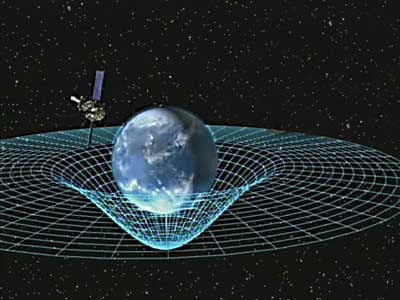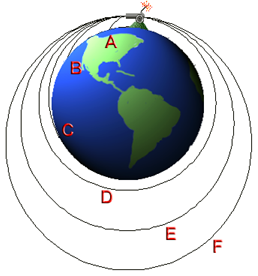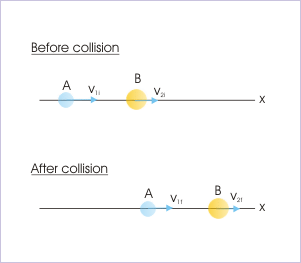The value of g at the surface of the earth is given by the equation and its average value on the surface of the earth is about
. But we have to remember that the value of g changes with R and some other factors which we will discuss below. Even from above equation we can tell that as the body moves above or below the surface of the earth, the value of g changes.
Variation of g above the surface of the Earth
Let us put a body at the height h above the surface of the earth. Now the distance of the object from the center of the earth is (R+h). Therefore the acceleration due to gravity at this point is given by the equation
Acceleration due to gravity at the surface of the earth is
Dividing these equation we get
From this we can say that will be greater than
and this will lead to a conclusion that
. Hence acceleration due to gravity decreases as the height increases.
For more approximation lets say that height of body (h) is far far less than radius of earth (R) and using binomial expansion we get
Hence we have the final result as
Variation of g below the surface of the Earth
Let us assume that an object is d depth below the surface of the earth. Then in this condition, the distance of the object from the center of the earth is (R-d). In this situation, the whole mass of the earth will not attract the object. The only mass attracting the object will be the volume of sphere having radius (R-d). If we consider earth as homogenous then the effective mass attracting the object is
Now, acceleration due to gravity below the surface of the earth is
….. (1)
Mass of earth is
Now, putting the mass of earth in equation we get
……. (2)
Dividing equation (1) by (2) we get
This expression shows that the value of g decreases as we the depth ‘d’ increases. This shows that as we go deep into the center of the earth, the value of g decreases continuously and at the center of the earth it becomes zero.
So, we find that acceleration due to gravity decreases as we move above or below the surface of the earth. The value of g is maximum at the surface of the earth.
Variation of g due to rotation of Earth
Due to earth’s rotation, the value of g increased while we move from equator to the poles along the surface of the earth. So, the value of g is maximum at pole and minimum at equation. The relation for this variation is given by
Here is the latitude of the place,
is the radius of the earth and
is the angular velocity of earth.
Variation of g due to shape of the Earth
Earth is ellipsoidal and not perfectly spherical. So, it is flatter at pole and has bulge at the equator. The polar radius of earth is and equatorial radius is
Since acceleration due to gravity is inversely proportional to the radius of the earth, g at pole is greater than that at the equator.






With the help of this I obtained 30/30 in physics project work